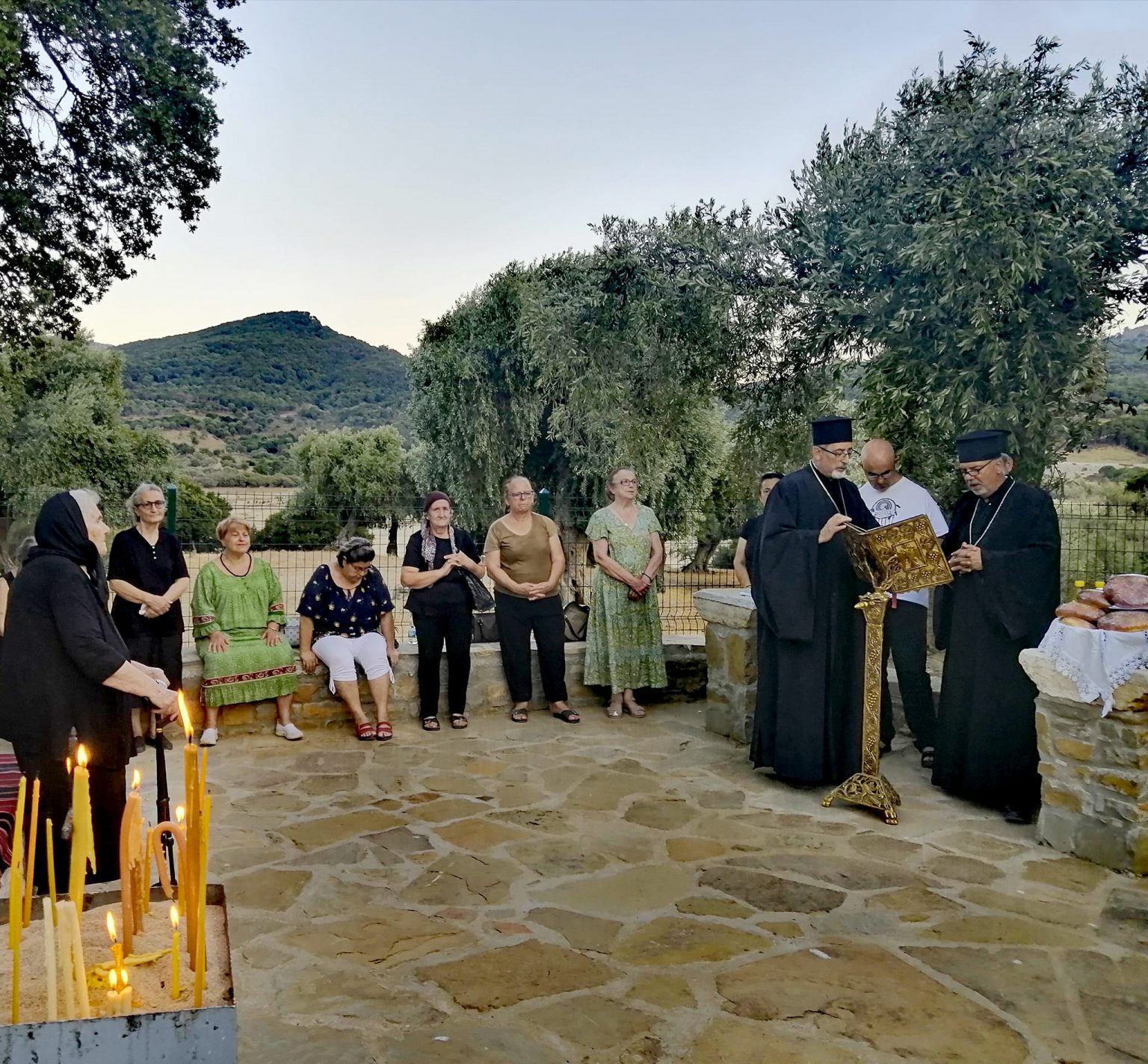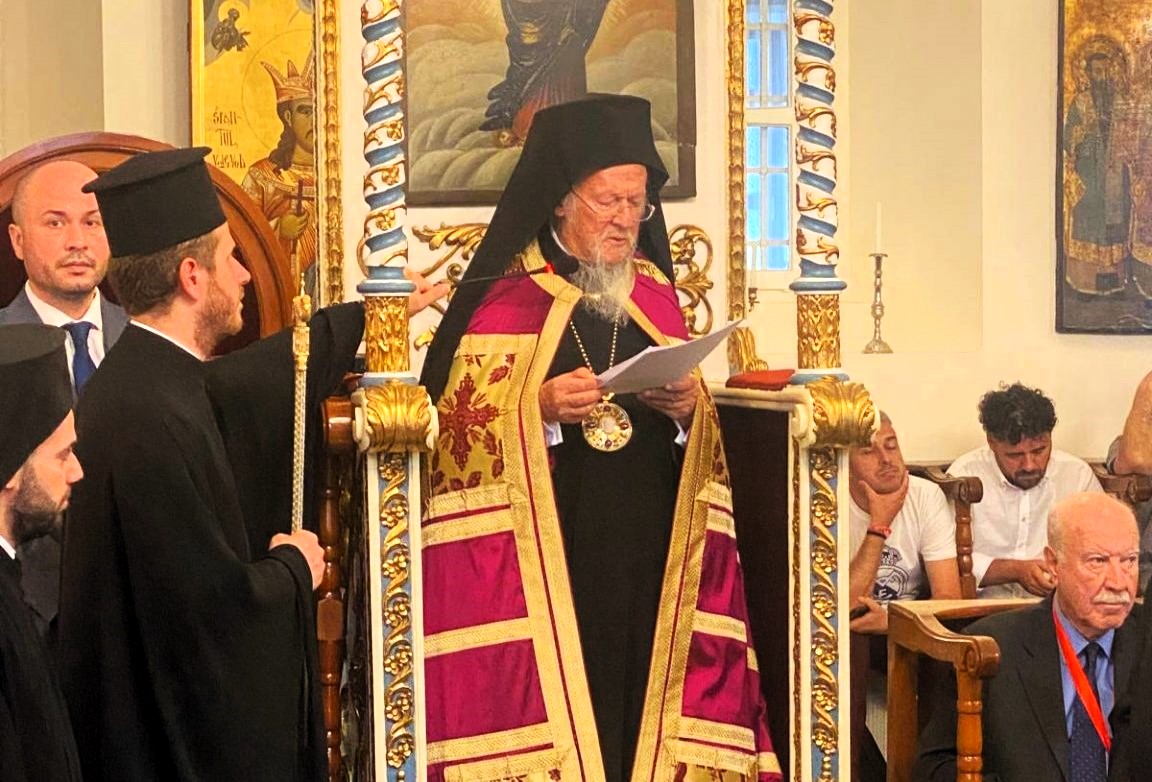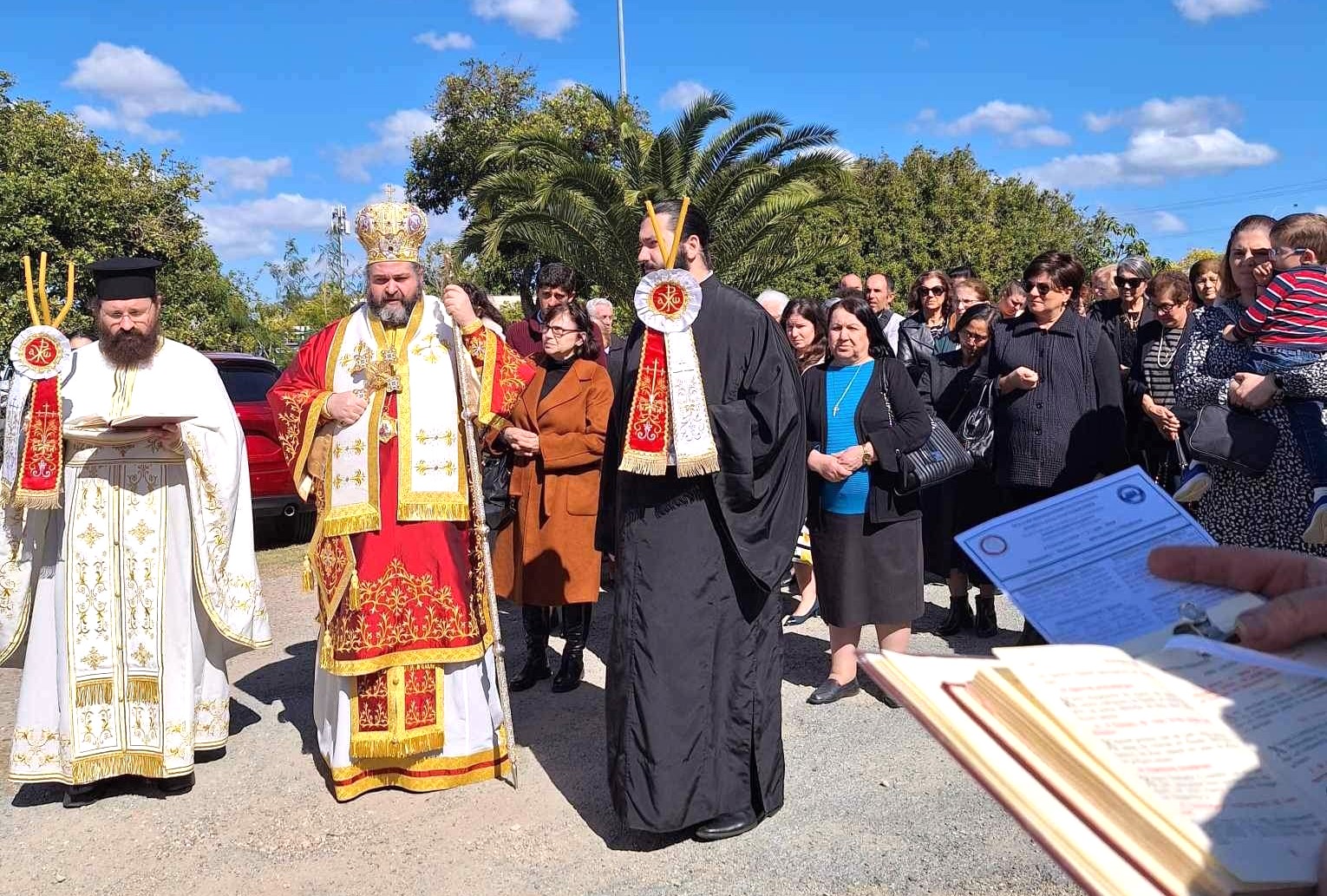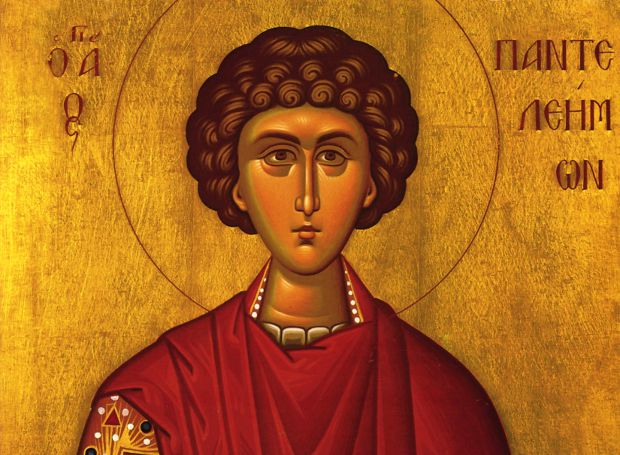Saint Symeon the Stylite (1 September)
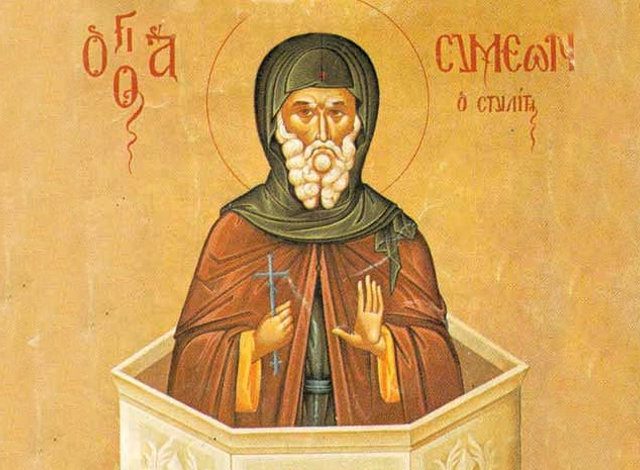

Saint Simeon the Stylite was born in the Cappadocian village of Sisan of Christian parents, Sisotian and Martha. At thirteen years of age he began to tend his father’s flock of sheep. He devoted himself attentively and with love to this, his first obedience.
Once, after he heard the Beatitudes in church, he was struck by their profundity. Not trusting to his own immature judgment, he turned therefore with his questions to an experienced Elder. The Elder readily explained to the boy the meaning of what he had heard. The seed fell on good soil, and it strengthened his resolve to serve God.
When Simeon was eighteen, he received monastic tonsure and devoted himself to feats of the strictest abstinence and unceasing prayer. His zeal, beyond the strength of the other monastic brethren, so alarmed the igumen that he told Simeon that to either moderate his ascetic deeds or leave the monastery.
Saint Simeon then withdrew from the monastery and lived in an empty well in the nearby mountains, where he was able to carry out his austere struggles unhindered. After some time, angels appeared in a dream to the igumen, who commanded him to bring back Simeon to the monastery.
The monk, however, did not long remain at the monastery. After a short while he settled into a stony cave, situated not far from the village of Galanissa, and he dwelt there for three years, all the while perfecting himself in monastic feats. Once, he decided to spend the entire forty days of Great Lent without food or drink. With the help of God, the monk endured this strict fast. From that time he abstained from food completely during the entire period of the Great Lent, even from bread and water. For twenty days he prayed while standing, and for twenty days while sitting, so as not to permit the corporeal powers to relax.
A whole crowd of people began to throng to the place of his efforts, wanting to receive healing from sickness and to hear a word of Christian edification. Shunning worldly glory and striving again to find his lost solitude, the monk chose a previously unknown mode of asceticism. He went up a pillar six to eight feet high, and settled upon it in a little cell, devoting himself to intense prayer and fasting.
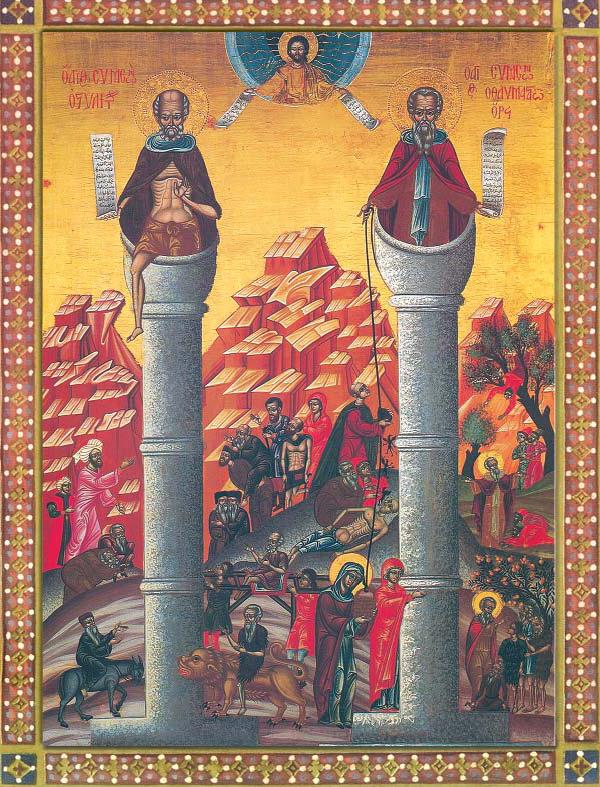

Reports of Saint Simeon reached the highest church hierarchy and the imperial court. Patriarch Domninos II (441-448) of Antioch visited the monk, celebrated Divine Liturgy on the pillar and communed the ascetic with the Holy Mysteries.
Elders living in the desert heard about Saint Simeon, who had chosen a new and strange form of ascetic striving. Wanting to test the new ascetic and determine whether his extreme ascetic feats were pleasing to God, they sent messengers to him, who in the name of these desert fathers were to bid Saint Simeon to come down from the pillar.
In the case of disobedience they were to forcibly drag him to the ground. But if he was willing to submit, they were to leave him on his pillar. Saint Simeon displayed complete obedience and deep Christian humility. The monks told him to stay where he was, asking God to be his helper.
Saint Simeon endured many temptations, and he invariably gained the victory over them. He relied not on his own weak powers, but on the Lord Himself, Who always came to help him. The monk gradually increased the height of the pillar on which he stood. His final pillar was 80 feet in height. Around him a double wall was raised, which hindered the unruly crowd of people from coming too close and disturbing his prayerful concentration.
Women, in general, were not permitted beyond the wall. The saint did not make an exception even for his own mother, who after long and unsuccessful searches finally succeeded in finding her lost son. He would not see her, saying, “If we are worthy, we shall see one another in the life to come.” Saint Martha submitted to this, remaining at the foot of the pillar in silence and prayer, where she finally died. Saint Simeon asked that her coffin be brought to him. He reverently bid farewell to his dead mother, and a joyful smile appeared on her face.
Saint Simeon spent 80 years in arduous monastic feats, 47 years of which he stood upon the pillar. Many pagans accepted Baptism, struck by the moral staunchness and bodily strength which the Lord bestowed upon His servant.
The first one to learn of the death of the saint was his close disciple Anthony. Concerned that his teacher had not appeared to the people for three days, he went up on the pillar and found the dead body stooped over at prayer. Patriarch Martyrius of Antioch performed the funeral before a huge throng of clergy and people. They buried him near his pillar. At the place of his ascetic deeds, Anthony established a monastery, upon which rested the special blessing of Saint Simeon.
We pray to Saint Simeon for the return to the Church of those who have forsaken Her, or have been separated from Her.
Our righteous Father Symeon was born about the year 390 in a certain village named Sis, in the mountain region of Cilicia and Syria. Having first been a shepherd, he entered the monastic discipline at a young age. After trying various kinds of ascetical practices, both in the monastery and then in the wilderness, he began standing on pillars of progressively greater height, and heroically persevered in this for more than forty years; the greater part of this time he spent standing upright, even when one of his feet became gangrenous, and other parts of his body gave way under the strain.
He did not adopt this strange way of life out of vainglory, a charge that some of his contemporaries made against him at the first: because he was already famous for his asceticism and holiness before ascending his first pillar (in Greek, style, whence he is called “Stylite”), many pious people came to him wishing to touch his garments, either for healing or for a blessing; to escape the continual vexation they caused, he made a pillar about ten feet high, and then higher and higher, until the fourth and last was about fifty feet high. The Church historian Theodoret of Cyrrhus, an eyewitness of his exploits who wrote of him while Symeon was yet alive, called him “the great wonder of the world.”
God gave him the grace to persevere in such an astonishing form of asceticism that multitudes came to see him from Persia, Armenia, South Arabia, Georgia, Thrace, Spain, Italy, Gaul, and the British Isles. Theodoret says that he became so famous in Rome that the Nomadic Arabs by the thousands believed in Christ and were baptized because of him; the King of Persia sent envoys to inquire into his way of life, and the Queen asked to be sent oil that he had blessed. He also was a great defender of sound doctrine, and confirmed the Orthodoxy of the Holy Council of Chalcedon for many who had been beguiled by the teachings of the Monophysites, including the Empress Eudocia, widow of Theodosius the Younger. After a life of unheard-of achievements and struggles, he reposed in peace at the age of sixty-nine, in the year 459.
He was born in Syria of peasant parents. At the age of eighteen, he left home and was tonsured a monk. He undertook the most difficult ascetic practices, and sometimes undertook a strict fast for forty days. He eventually took upon himself a form of asceticism that was previously unknown. He stood day and night on a pillar, in unceasing prayer. At first, his pillar was six cubits high; he later raised it to twelve cubits, then to twenty-two cubits, then to thirty-six cubits, and finally to forty cubits high. *) On two occasions his mother Martha came to see him, but he refused to receive her, saying from atop the pillar: “Do not disturb me now, my mother. If we become worthy, then we’ll see each other in the next world.” St. Simeon endured countless assaults from demons, but he conquered them all by prayer to God. The saint worked many great miracles, healing by word and prayer many who were afflicted. People from all over gathered around his pillar–the rich and the poor, kings and slaves. Simeon helped everyone: healing some of infirmities, comforting those in need, instructing others, and reproaching some who held heretical beliefs. Thus, he turned Empress Eudocia from the Eutychian heresy and brought her back to Orthodoxy. He lived the ascetic life during the reigns of the Emperors Theodosius the Younger, Marcian and Leo the Great. Simeon, the first great stylite in Christianity and a great miracle-worker, lived to be 103 years old. He reposed in the Lord on September 1, 459. His relics were translated to Antioch, to the church dedicated to his name.
————————
*) A cubit equals the length of an adult forearm, from the tip of the middle finger to the elbow, or approximately twenty inches. –Trans.
Apolytikion of Righteous Symeon the Stylite
First Tone
Thou becamest a pillar of patience and didst emulate the Forefathers, O righteous one: Job in his sufferings, Joseph in temptations, and the life of the bodiless while in the body, O Symeon, our righteous Father, intercede with Christ God that our souls be saved.
Kontakion of Righteous Symeon the Stylite
Second Tone
Thou soughtest the heights, though parted not from things below; thy pillar became a chariot of fire for thee. Thou becamest thereby a true companion of the angelic host; and together with them, O Saint, thou ceaselessly prayest Christ God for us all.
Source: oca.org / goarch.org / westserbdio.org


